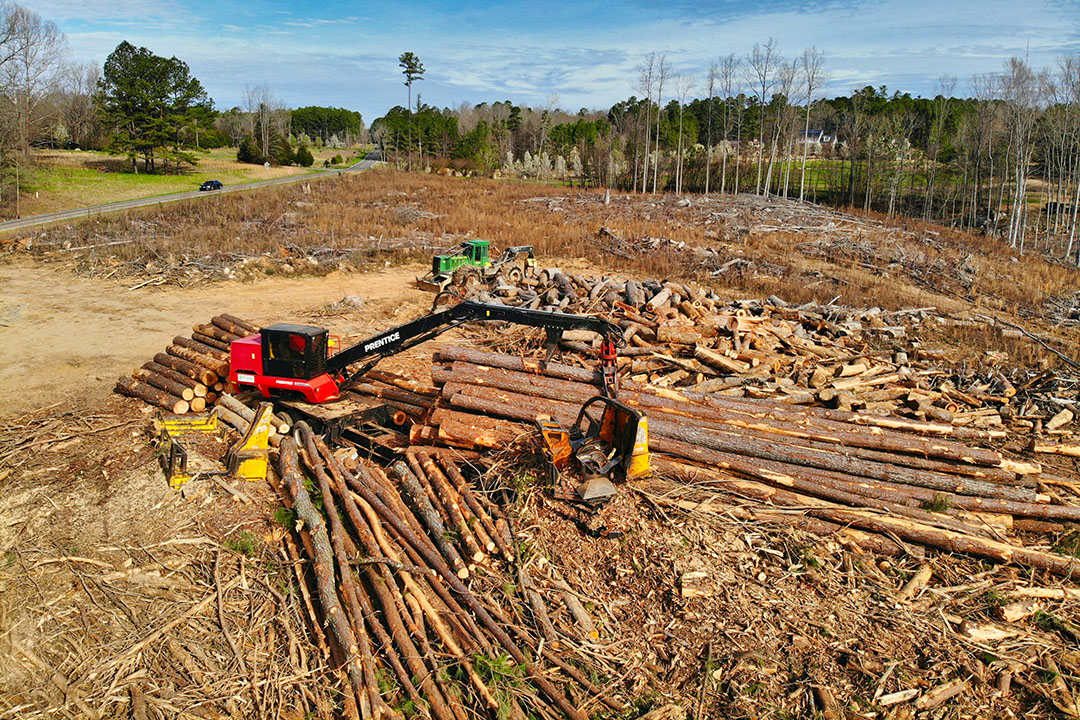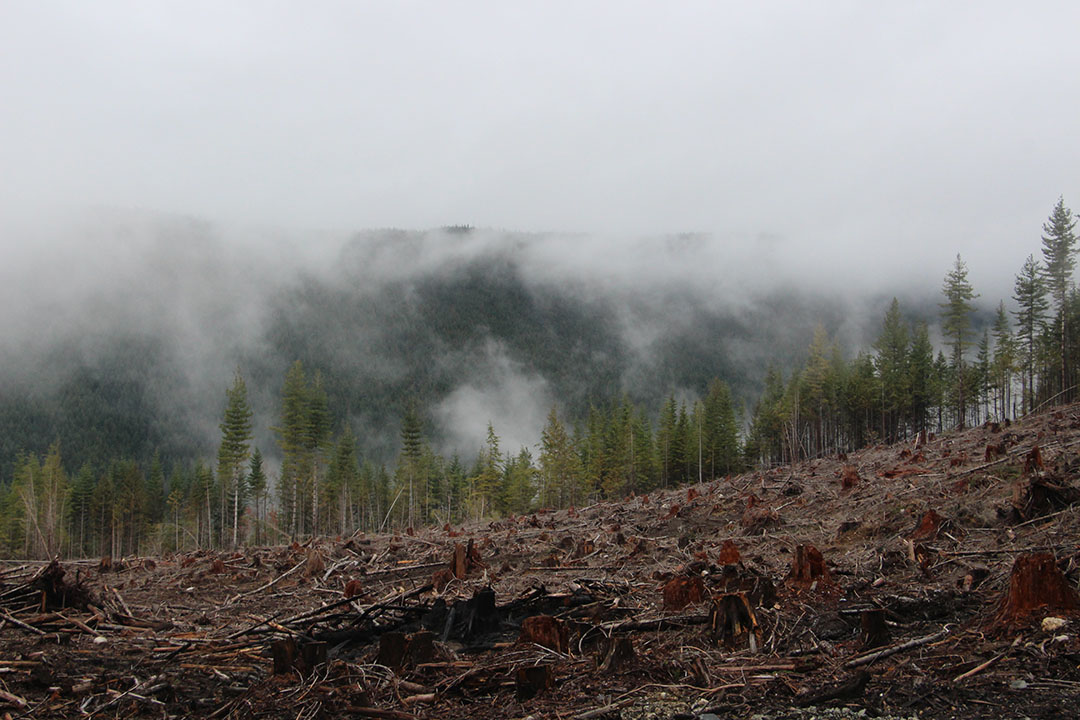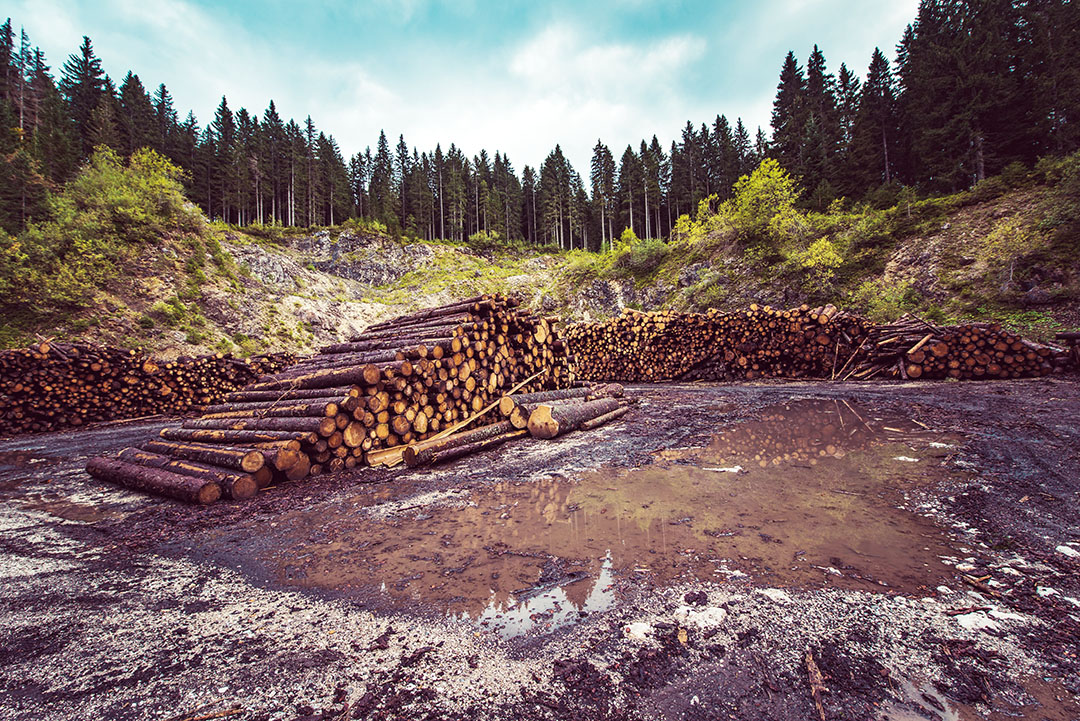A Nature Canada Special Report
2024 LOGGING EMISSIONS UPDATE
The federal government portrays logging as carbon neutral, but it’s actually the third biggest polluting sector in Canada.
Send the Letter
Stop the destruction of Canada’s forests!
Canada’s Climate Plan must recognize—and reduce—carbon dioxide emissions caused by clear-cut logging of Canada’s forests.
The sneaky side of Canada’s High-Emission Logging sector.
What would you say if you found out that emissions from Canada’s logging industry rival those of the oil sands? Last year Nature Canada released a report showing that the country’s net logging emissions were higher than emissions from oil sands production in every year from 2005 to 2018.
Carbon emissions from Canada’s logging sector are not clearly reported to the public. Emissions from logging make up over 10% of Canada’s total, yet Canada has no plan for reducing them.
This spring, Canada’s Commissioner on Environment and Sustainable Development also drew attention to the serious repercussions of the government’s failure to clearly and separately report greenhouse gas emissions from forestry and logging in Canada.
The federal government needs to transparently report the greenhouse gas emissions of the logging sector and put in place policies to reduce these emissions to align with climate goals and protect old-growth forests. Tell the Government to protect old-growth forests and stop obscuring climate emissions from logging.
Each year, the logging industry clearcuts more than 530,000 hectares of forest across Canada, equivalent to more than six NHL hockey rinks every minute.
Protecting the world’s forests, just like a rapid transition away from fossil fuels, is essential to avoiding the worst impacts of climate change.
Sustainable forestry in Canada is a corporate myth. Emissions from logging are more than 10 percent of Canada’s annual total reported greenhouse gas emissions – or the equivalent of all emissions from Quebec.
Forests, in addition to their importance in maintaining biodiversity, play an irreplaceable role in global carbon regulation, absorbing one-third of human-caused carbon emissions from the atmosphere annually and storing this carbon long-term in their soil and vegetation. This is why forest protection and restoration are key pillars of international efforts to advance natural climate solutions (i.e., actions that preserve and enhance ecosystems’ role in absorbing and storing carbon).
Preserving forests that have not been significantly disturbed by humans, like parts of our boreal forest, is particularly important. These forests, which are rapidly disappearing, hold unique value for the climate and biodiversity. Once gone, they are irreplaceable.
That’s why it’s critical that the federal government transparently report the climate impacts of industrial logging — and put in place policies to reduce logging emissions and protect vital old-growth forests.
Section 1
What’s At Stake?
The boreal forest holds some of the world’s last stretches of and is a biodiversity hotspot. Known as the world’s most carbon-dense terrestrial ecosystem, it stores twice as much carbon per hectare as tropical forests.
Yet, the logging industry continues to more than 530,000 hectares of the boreal each year (about six NHL hockey rinks every minute), a lot of which is irreplaceable primary forest.
The government of Canada has carved out a unique set of rules for the forestry sector that create dangerous policy gaps in carbon accounting and regulation in the sector. These accounting and regulatory loopholes downplay or write off the industry’s impact on climate and lead Canada to undervalue the protection of primary forests.
Leaving these logging loopholes unaddressed gives the logging industry a free pass for its carbon emissions and puts Canada climate and nature goals at risk
The Cost of Logging Loopholes
- Canada ranks third in intact or primary forest landscape loss, behind only Brazil and Russia.
- Carbon emissions from Canada’s logging sector are not separately and transparently reported to the public.
- Emissions from logging make up 10% of Canada’s total GHG emissions, yet Canada has no plan for reducing them.
- More than 90% of the logging in Canada is in the form of clearcutting, a practice in which the logging operation removes nearly all the trees from a given area.
- Clearcutting primary forests releases significant amounts of carbon into the atmosphere, both from produced wood products, disturbed soil, and biomass debris for years to come.
- The change in forest cover also exposes the soil to increased temperatures and leads to other changes that can impact decomposition and soil microbial communities thereby increasing soil carbon releases.
- Later, replanted forest may later absorb significant amounts of carbon but won’t reach the same level of maturity and carbon sequestration as primary forests for centuries.
- These impacts, compounded with the presence of natural wildfires (which are exacerbated by industrial logging), result in carbon debt that can last for generations.
Section 2
Recommendations
Canada’s commitments on natural climate solutions, and its large forest carbon flows and stores, could position it as a true global leader on forest protection and climate-friendlier logging practices.
However, loopholes in the country’s current forest carbon accounting system make it impossible at present for Canada to fulfill its potential. Below are six recommendations to help Canada stay on track of its climate commitments.
1. Ensure unbiased accounting of logging emissions
Canada should shrink its definition of “managed forest” and stop counting carbon removals from older trees in primary forest areas so that only truly human-caused carbon emissions and removals are included in the national greenhouse gas inventory.
Canada also needs to fully account for—and report in its inventory—all carbon emissions and removals on managed forest lands that have been logged by including emissions from major wildfires on those lands. Canada should also calculate the contribution of forests towards Canada’s 2030 emissions target the same way as for all other sectors: by comparing net emissions in 2030 with those in 2005.


2. Improve accuracy of carbon emissions measurements associated with industrial logging through investment in on-site monitoring and more detailed imaging
The government should commit the necessary resources to testing and improving its forest carbon model through significantly increased on-site monitoring of forest carbon flows. The federal government should also begin measuring and accounting fully for the carbon impacts of long-term loss of forest cover from infrastructure such as logging roads, landings, and seismic lines.
3. Ensure better governance and oversight of logging’s carbon emissions
Responsibility for quantifying and accounting for forest-related carbon emissions should be transferred from the Ministry of Natural Resources to the Ministry of Environment and Climate Change. This will provide better clarity of roles and help support the harmonization of accounting practices with other sectors.


4. Regulate logging emissions consistently with other key industrial sectors
Like all other industry sectors with major emissions, forest management activities—including harvested wood products and biomass combustion—should be included in Canada’s carbon pricing framework and added to the federal Output-Based Pricing System.
Pricing net forest carbon emissions and removals would hold the logging industry accountable for its climate impacts and provide incentives to both provincial governments and industry to adopt climate-friendly forest management practices.
5. Prioritize forest protection and restoration under Indigenous leadership
Federal and provincial governments should prioritize at-risk, high-carbon, and high-biodiversity areas in the boreal forest for protection as part of Canada’s 30×30 target—including areas currently slated for logging. Forest protection and restoration initiatives should center on Indigenous-led solutions. Strong Indigenous land rights are not only critical to Indigenous self-determination and sovereignty, but are also correlated with better protections for forest carbon and biodiversity.


6. Provide global climate leadership by setting a new international standard for forest carbon accounting
Many of the logging sector loopholes in Canadian policy are also found elsewhere, particularly in other Northern countries at temperate and boreal latitudes. Canada should work with US counterparts and key international leaders to establish new best practices for forest carbon accounting globally.
